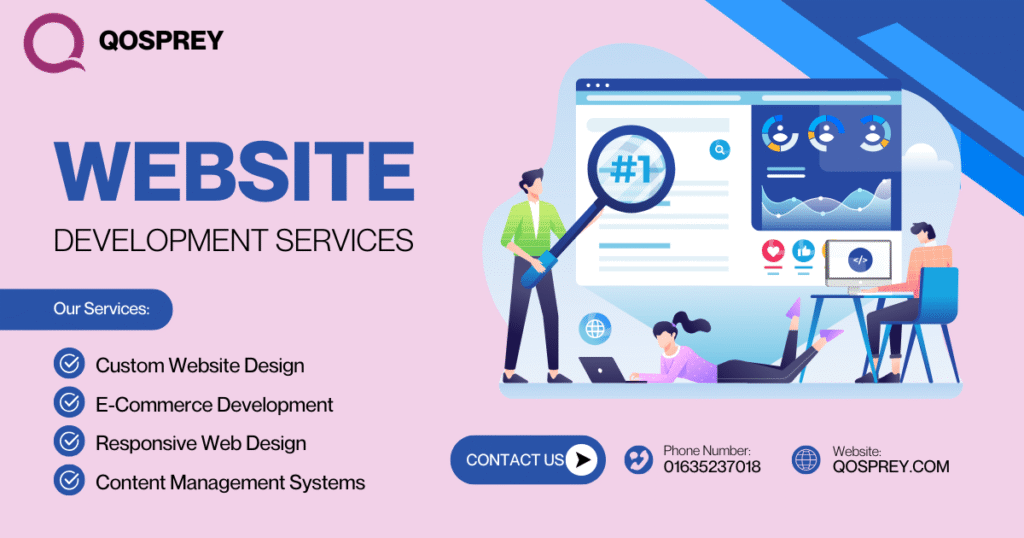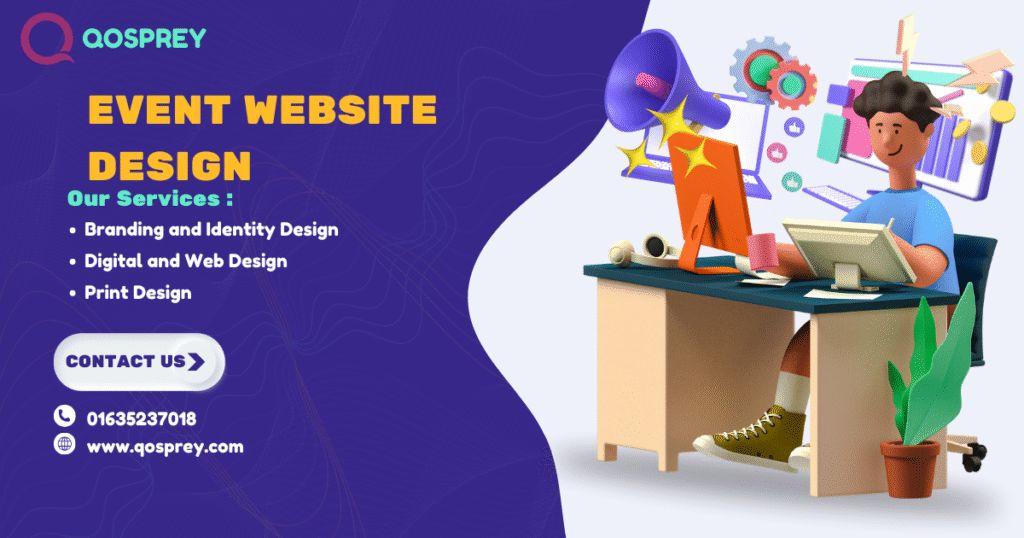In today’s digital world, the first impression of your event often happens online. Whether it’s a conference, a concert, a virtual seminar, or a community festival, a well-designed website can make or break your event’s success. Attendees judge professionalism, clarity, and trustworthiness in seconds, so your event website needs to be clear, engaging, and functional.
Creating an event website is not just about aesthetics—it’s about guiding visitors seamlessly from curiosity to registration. In this article, we’ll explore the essential elements, best practices, and strategies for building a high-performing event website. Plus, we’ll show how Qosprey, a global digital solutions company, can help turn your event ideas into an online reality.
Why Your Event Website Matters
A professional event website is your digital headquarters. It’s the place attendees go to learn about your event, check schedules, see speakers, and buy tickets. If your website is confusing, slow, or unattractive, visitors may leave and never come back.
Some reasons why website design matters for events include:
- Boosting ticket sales: Easy registration pages and clear CTAs encourage visitors to sign up immediately.
- Establishing credibility: A polished, professional design builds trust.
- Increasing engagement: Interactive features, images, and videos keep users exploring longer.
Qosprey’s expertise lies in creating websites that not only look great but also maximize conversions. With fast loading speeds, intuitive navigation, and visually appealing designs, they ensure your website works as hard as you do.

Essential Features of a Successful Event Website
To make your website truly effective, it should include several key elements:
1. Clear Event Information
Your visitors should immediately understand the “who, what, where, and when” of your event. Include the event name, date, location, and theme at the top of your homepage.
2. Easy Navigation
Menus should be simple and intuitive. Highlight the most important sections, such as Registration, Speakers, and Schedule. Anchor links can help users jump to specific parts of the page effortlessly.
3. Visual Appeal
Use high-quality images, event logos, and videos. Consistent colors, fonts, and branding create a cohesive experience that reflects your event’s tone.
4. Mobile Responsiveness
More than half of web users access websites via mobile devices. Ensure your site looks and works perfectly on smartphones and tablets.
5. Strong Calls-to-Action
Buttons like “Buy Tickets Now” or “Reserve Your Seat” should stand out. Use contrasting colors and place them strategically to guide visitors toward action.
Best Practices for Event Website Design
Beyond the basics, following design best practices can improve user experience and engagement:
- Keep layouts clean: Avoid cluttered pages with too much text or too many images.
- Add urgency: Countdown timers or “Limited Seats Available” banners encourage quick action.
- Optimize speed: Websites should load in under three seconds to prevent visitor drop-offs.
- Focus on accessibility: Use proper color contrast, alt text for images, and keyboard navigation.
By applying these practices, you ensure your visitors enjoy a seamless experience from start to finish. Qosprey incorporates these principles into every project, blending creativity with functionality to deliver a website that performs.

Pages Every Event Website Needs
A complete event website should include:
- Home Page – Introduces the event and directs users to register.
- About Page – Shares the event’s mission and background.
- Schedule Page – Displays sessions and activities in an organized layout.
- Speakers Page – Highlights profiles with photos and bios.
- Registration Page – Offers a simple, secure sign-up form.
- Sponsors Page – Shows partners and collaborators.
- Contact Page – Provides forms, emails, and live chat options.
Qosprey ensures that all these pages are integrated smoothly, offering visitors a consistent and satisfying experience.
SEO and Technology for Event Websites
Optimizing your website for search engines ensures your event reaches a wider audience. Use targeted keywords like “business summit 2025” or “music festival Dhaka,” add structured data for event details, and optimize meta titles, descriptions, and images.
- Integrate ticketing systems for smooth registration.
- Enable email automation for updates and reminders.
- Add live streaming for hybrid events.
- Use analytics to track visitor behavior.
Qosprey excels at implementing these tools, ensuring your event site not only looks great but also performs efficiently.
Why Choose Qosprey
Founded in 2023, Qosprey is a global digital solutions company with a talented team rooted in Bangladesh. They specialize in end-to-end website design, development, SEO, and digital marketing. Known for fast delivery, affordable pricing, and premium quality, Qosprey takes care of every aspect of your event website, allowing you to focus on delivering an exceptional event. Their motto, “Make business our headache, not yours,” ensures that every project is client-focused, results-driven, and hassle-free.
Conclusion
A well-designed event website is more than a digital brochure—it’s a tool that drives engagement, builds credibility, and increases ticket sales. By following best practices, including all essential features, and optimizing for SEO and mobile users, you can create a website that attracts and converts attendees.
Take the next step: Partner with Qosprey to create an event website that leaves a lasting impression, drives registrations, and makes your event a success. Your audience is waiting online—make sure they find the best first impression possible.
FAQs
Yes, every website comes with SEO best practices to ensure visibility and attract the right audience.
Absolutely. Qosprey ensures all websites are fully responsive and optimized for all devices.
Yes! Qosprey can integrate payment gateways and ticketing systems for smooth registration.
A fully functional event website typically takes 2–4 weeks, depending on the project scope and customizations.